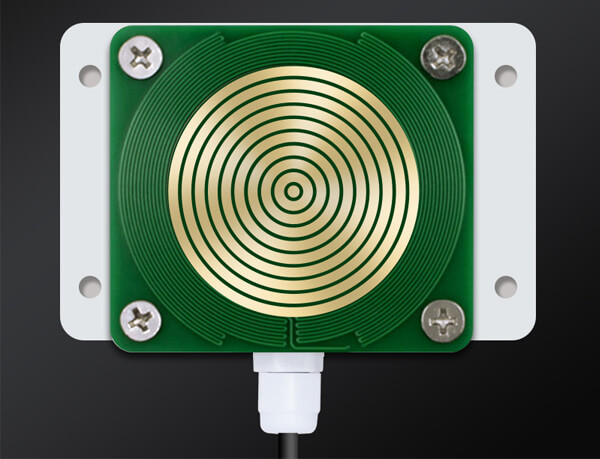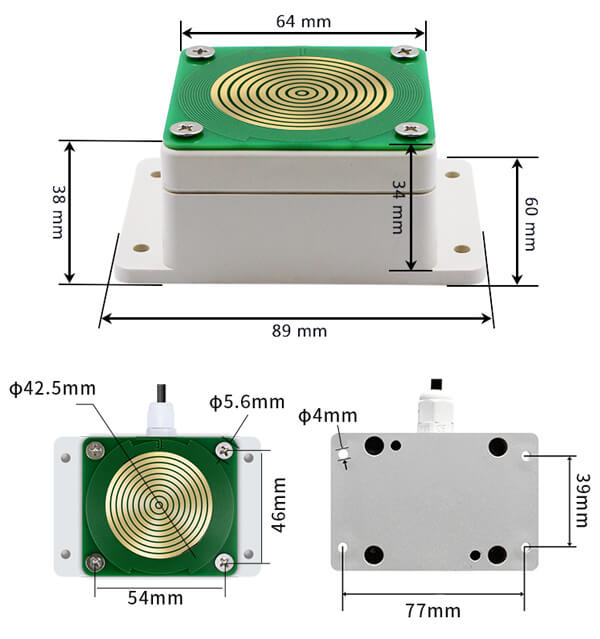Meteorological Sensors & Meteorological Stations
Table of Contents What are meteorological sensors? Meteorological sensors are specialized equipment for understanding and measuring climate change. These sensors are often mounted in combination
RS-YUX-*-* rain and snow sensor is a qualitative measuring device that measures whether it rains or snows outdoors or in nature. It has high sensitivity and an internal automatic heating mode, which can effectively prevent measurement errors caused by freezing on the surface of the sensor in cold weather.
There are two output modes of this rain and snow sensor: rs485 and switch value. This rain and snow sensor has excellent craftsmanship, corrosion resistance, and can be used outdoors for a long time.

The rain-snow sensor is one of the components of the weather monitoring system. It is a device specifically used to measure whether it rains or snows outdoors or in nature. The appearance of this rain sensor is made of high-strength ABS waterproof material, and the protection level is IP68. It senses rain and snow through the spiral metal coil on the top, and has an auto-heating function to avoid surface icing caused by severe cold weather in winter. When in use, an external sound and light alarm can be connected to increase the alarm function. Or use the free cloud platform provided by our company to achieve alarm.
Power supply: 10~30V DC
Normal working power: 0.4W
Storage environment: -40℃~80℃
Working power when heating: 2.4W
Output signal: 485, relay
Parameter configuration: software setting
Default Modbus address: 01
Support function code: 03, 06
Heating start ambient temperature: <15℃ (default)
Maximum heating temperature: 40℃ (default)
Output relay with load capacity: 250VAC 1A/30VDC 1A
Rain and snow sensors can be used in greenhouses. In times of frequent heavy rains, after the rain sensor detects the rain information, it links the rain shelter of the greenhouse through the corresponding system and sends a signal to the greenhouse manager at the same time, which can effectively reduce the loss of greenhouse crops.
Rain and snow sensors can be used on highways or railway tracks. After the rain and snow sensor detects the snowfall, it can upload the data to the cloud platform through the corresponding highway weather station or railway weather station, and cooperate with other sensors to make accurate judgments of the snowfall, and remind you that it is still on the high speed or already on the high speed The driver’s master prepared early.
Rain snow sensors can be used in outdoor weather station equipment to provide reference data for meteorological environment monitoring.

When installing the rain and snow sensor, keep the sensing surface of the sensor and the horizontal plane at an angle of 15 degrees to prevent the accumulation of rain and snow from affecting the sensor measurement.
The rain and snow sensor is an instrument that uses the conductive characteristics of rainwater and uses advanced detection circuits to detect whether there is rain or snow.
Rain monitoring: The top of the rain and snow sensor uses grid electrodes to use the conductivity of water. When rain falls on the sensing area, the electrodes will be short-circuited, so that the device can detect rain.
Snow monitoring: The reason why the rain and snow sensor can measure the snowfall is that the sensor has an automatic heating function, which can prevent freezing and condensation in the snow, the temperature is lower than 0 ℃ for a long time, and the high humidity environment. And the heating temperature can be set.
After installing the rain sensor, take a small number of water droplets on the surface of the sensor. If the sensor alarms, it means that the sensor is normal.
When maintaining the rain and snow sensor, use a clean, dry soft cloth to clean the outside of the instrument to prevent the instrument from being scratched, maintain the integrity of the external protective film, and increase the service life of the instrument. Rough treatment of the instrument will destroy the internal circuit board and delicate structure.
In order to protect the patented technical parameters, please contact us for instructions.
Table of Contents What are meteorological sensors? Meteorological sensors are specialized equipment for understanding and measuring climate change. These sensors are often mounted in combination
Due to the strong regional and diurnal variation of rainfall, accurate measurement of rainfall has been difficult to achieve in history. After the establishment of
The weather sensors are the sensing end of the weather station and collect various weather-related data. The weather station can obtain the main parameters and
A greenhouse is a closed environment that provides optimal conditions for plant growth and promotes plant growth by controlling indoor and outdoor environments. A complete
Table of Contents What is IoT? IoT is the “Internet of things“. It is an extended and expanded network based on the Internet. It combines
What is smart farming? Smart farming is the application of Internet of Things technology to traditional agriculture, using sensors and software to control agricultural production
The weather station can provide users with comprehensive weather information over the years. Regular maintenance of weather stations is an important operation to ensure measurement
A complete set of a weather station is composed of two parts: hardware and software. The hardware part includes various weather station sensors, connecting lines,
Table of Contents Do you know where to mount weather station? The weather station should be installed as far as possible on the open ground
Table of Contents A sensor is a device that can sense the measured information and transform it into an electrical signal or other required forms